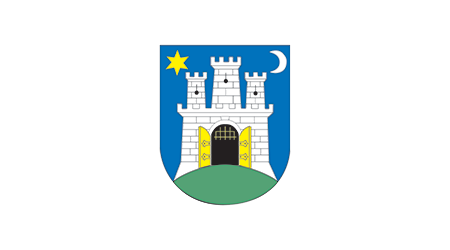South

Author: Demjan Rožman; Source: Archives of Karlovac Tourist Board
Karlovac
Situated at the confluence of three rivers, Karlovac was founded in the late 16th century by Archduke Karl of Styria to defend Central Europe from the ttoman Turks.
Although the city walls were largely demolished long ago, the muncipal park still follows the star-shaped pattern of the original fortifications. A short stroll from the centre, the grassy banks of the river Korana provide the perfect opportunity to sunbathe - or to feed the local swans.

Source: Archives of Zagreb County Tourist Board
Donja Kupčina
Many of the villages west of Zagreb preserve tumbledown wooden farmhouses, and some of the best examples are preserved at the village of Donja Kupčina, just southeast of Karlovac. A small museum of local heritage (Zavičajni muzej) contains a lovingly-preserved group of nineteenth-century farm buildings clustered around a glade. A collection of locally-made linen and handembroidered costumes adds colour to the display.
Ozalj
Northwest of Karlovac, the country town of Ozalj is dominated by its stout castle, perched high above the winding Kupa river. Long associated with two of Croatia’s greatest noble families, the Zrinskis and the Frankopans, the castle museum pays eloquent tribute to the courtly culture of Ozalj’s 17th century heyday.
Also looking rather like a medieval castle is the Munjara, a playfully Neo-gothic hydroelectric plant built on the Kupa river in 1908. The Munjara’s Austrian built turbines, installed in 1926, are still in working order.
Slunj
If you’re travelling from Zagreb towards the Plitvice Lakes then consider a stop-off in Slunj, a hillside-hugging town positioned high above the Korana river. Down by the river’s edge is the suburb of Rastoke, where the tumbling waters of the Slunjčica stream have been harnessed to power a cluster of watermills.
There is a fascinating maze of man-made channels and wooden bridges to explore, while locally-caught trout is available in waterside restaurants.

Author: Ante Bionda
Plitvice National Park
Croatia’s largest protected area and one of the most popular tourist attractions in the country, the Plitvice National Park embraces the kind of landscape unique enough to stick in a visitor’s memory for a lifetime. At its heart is a string of turquoise lakes, each fed by a sequence of terraced waterfalls. These cascades were created over several millennia by a waterborne limestone sediment known as travertine, picked up by mountain rivers and deposited downstream to form a sequence of natural dams.
The process is still very much ongoing, and silverygrey travertine can be seen coating the pebbles and plant stalks of Plitvice’s lakes. The rush and thunder of the rapids contrast markedly with the untroubled calm of the larger lakes, although the silence is frequently broken by the sound of happily croaking frogs. Above the lakes lie forests thick with fir and beech, an ideal habitat for deer, wolves, lynx and brown bears.
The park is very well organized for visitors, with a clearly signposted network of footpaths running alongside the lakes and wooden walkways spanning some of the rapids. The entrance ticket includes free travel both on boats that traverse Plitvice’s largest lake, and the road train that runs along the eastern side of the park, connecting the two main entrances.

Author: Slavko Bionda; Source: Archives of Public institution Barać caves
Barać Caves
East of the Plitvice Lakes lies an area of porous limestone riddled with caves. Most accessible of these is the Barać Caves (Baraćeve špilje), where visitors can take a 40-minute guided tour through a dramatic subterranean landscape of stalagmites and stalagtites.
The caves are a popular nesting area for bats – indeed a huge pile of accumulated bat guano is one of the cave’s more offbeat attractions.
Brochure

 Hrvatski
Hrvatski English
English Deutsch
Deutsch Spanish
Spanish French
French Italian
Italian Russian
Russian Korean
Korean Japanese
Japanese Chinese
Chinese









